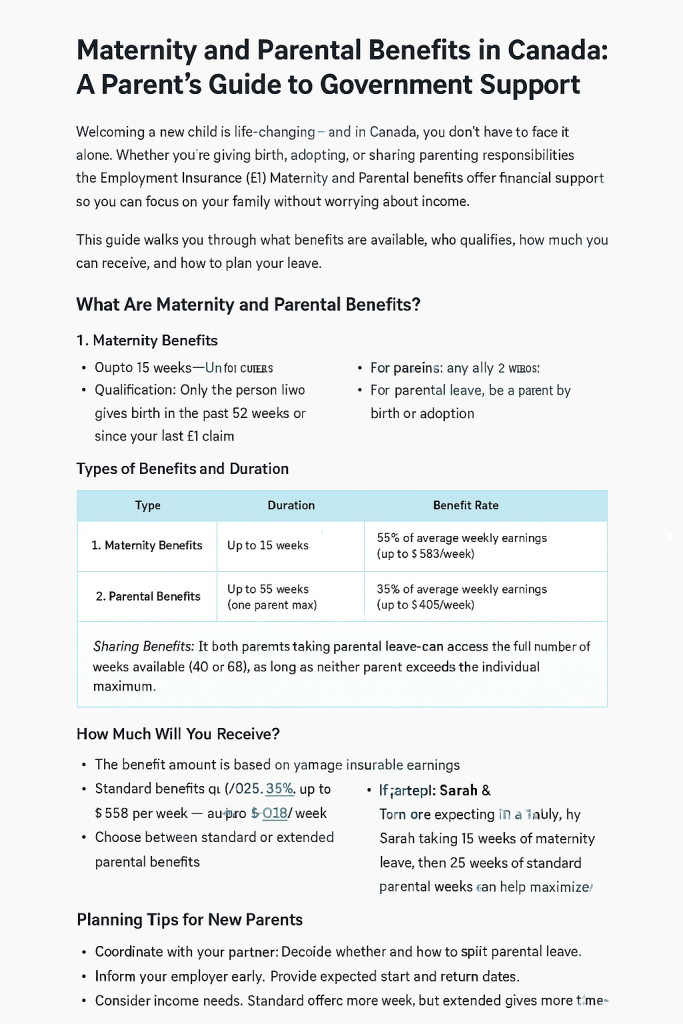Welcoming a new child is life-changing—and in Canada, you don’t have to face it alone. Whether you’re giving birth, adopting, or sharing parenting responsibilities, the Employment Insurance (EI) Maternity and Parental Benefits offer financial support so you can focus on your family without worrying about income.
What Are Maternity and Parental Benefits?
These are two separate but connected types of EI benefits:
- Maternity Benefits: For birth mothers who need time off work for pregnancy and childbirth recovery.
- Parental Benefits: For parents caring for a newborn or newly adopted child. These can be shared between parents.
Who Is Eligible?
- Be employed in insurable employment.
- Have worked at least 600 insurable hours in the past 52 weeks or since your last EI claim.
- Have your weekly earnings reduced by more than 40% due to the leave.
- For maternity leave: be the birth mother.
- For parental leave: be a parent by birth or adoption.
Types of Benefits and Duration
1. Maternity Benefits
- Duration: Up to 15 weeks.
- Who qualifies: Only the person who gives birth.
- When to start: Can begin as early as 12 weeks before the due date and end as late as 17 weeks after the birth.
2. Parental Benefits
You have two options: Standard or Extended.
| Type | Duration | Benefit Rate |
|---|---|---|
| Standard | Up to 40 weeks (one parent max 35) | 55% of average weekly earnings (up to $668/week) |
| Extended | Up to 69 weeks (one parent max 61) | 33% of average weekly earnings (up to $405/week) |
Sharing Benefits: If both parents take parental leave, they can access the full number of weeks available, provided neither exceeds their personal limit.
How Much Will You Receive?
- Standard: 55%, up to $668/week
- Extended: 33%, up to $405/week
- Check with your employer for possible top-up plans.
How to Apply
- Apply online at Service Canada.
- Submit your Record of Employment (ROE).
- Choose between standard or extended parental benefits.
- Complete biweekly reports (if requested).
Note: You must apply no later than 4 weeks after your last working day.
Planning Tips for New Parents
- Coordinate with your partner on how to share leave.
- Notify your employer in advance.
- Consider financial needs when choosing standard vs extended.
Example: Sarah and Tom are expecting a baby. Sarah takes 15 weeks of maternity leave, then 25 weeks of standard parental leave. Tom takes 15 weeks of the remaining 40 parental weeks, maximizing benefits while both spend time with the baby.
Key Takeaways
- Maternity and parental benefits support parents during early childcare.
- Choose benefit type based on time vs income needs.
- Apply early and understand your entitlements for a smooth process.



